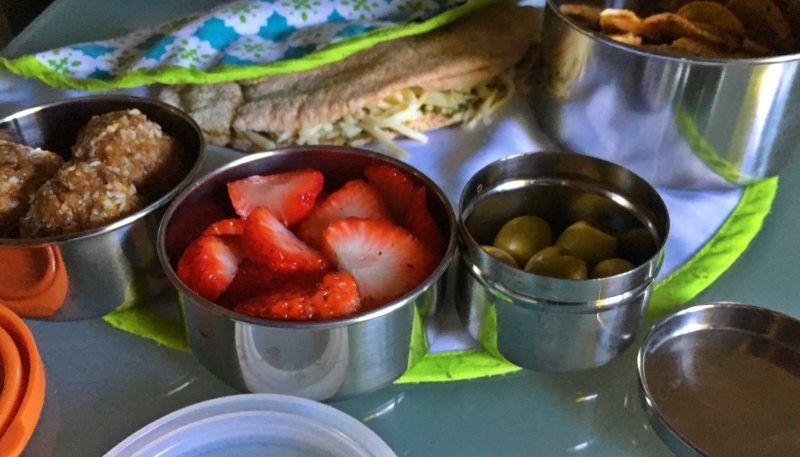
Reducing Plastic Waste in the Lunchbox
If your child’s lunchbox is full of disposable plastic containers and sandwich bags, it’s time to make a change.
The UK alone produces more than 170m tonnes of waste each year, much of it food packaging. While the invention of plastic has revolutionised the way we store and consume food, there is now so much of it that landfills can’t cope. Some of it is poisonous, and some of it never degrades. It can take well over 200 years for some types of plastic to break down. There’s one type of plastic that doesn’t break down at all. That’s called PET, though it is recyclable. However, only 1/3rd of plastic packaging is recycled.
Instead of packing snacks and sandwiches in small sandwich bags made of plastic they can be packed in reusable cloth pouches or wraps. These are easily washed either by throwing them into the washing machine with a clothes wash or by simply wiping them clean with a cloth. They can be used for sandwiches, cakes, homemade baked goods, vegetable sticks i.e. carrot, pepper, cucumber and fruit.
Lunch items can also be served in reusable containers. These metal pots with lids are incredibly useful for a variety of lunchtime items and really easy to clean either by hand or in the dishwasher. These can be used for sandwiches, salads and even cold leftovers as well as more snacky items such as crackers and cheese.
You can also opt for fresh fruit instead of single-serving fruit cups, and buy items like yogurt and puddings in bulk and simply put a portion in a reusable dish for lunch. This simple step will not only save on packaging but also money. Compare the prices of individually wrapped products with larger pots and packages per portion size.
A really good investment is a small Thermos. These are great for heated up leftovers i.e. stews, curries, pasta dishes and soup. Using up leftovers is a great way to reduce food waste of course.
Finally, an insulated water bottle is a must. Not only does it keep the water cool (or hot drinks hot if you wish), they’re also hard-wearing and the water genuinely tastes better as it is not exposed to the extremes of weather or extreme room temperatures (school classrooms can get mighty stuffy).
These simple ideas could go some way to reducing the 40kg of recyclable plastic thrown away by each household in the UK each year.
